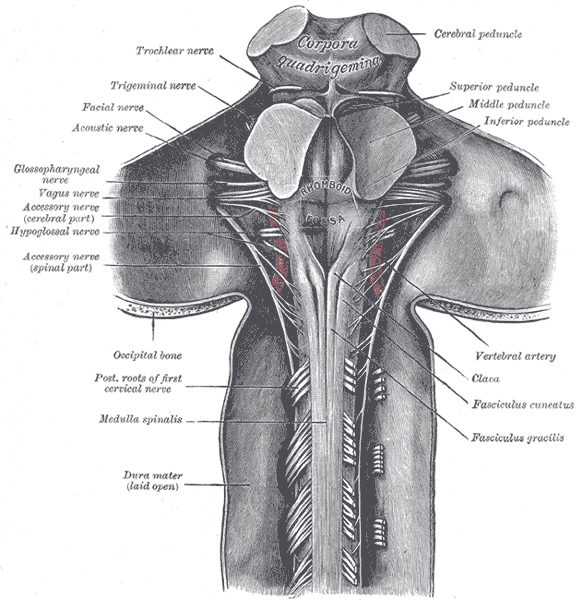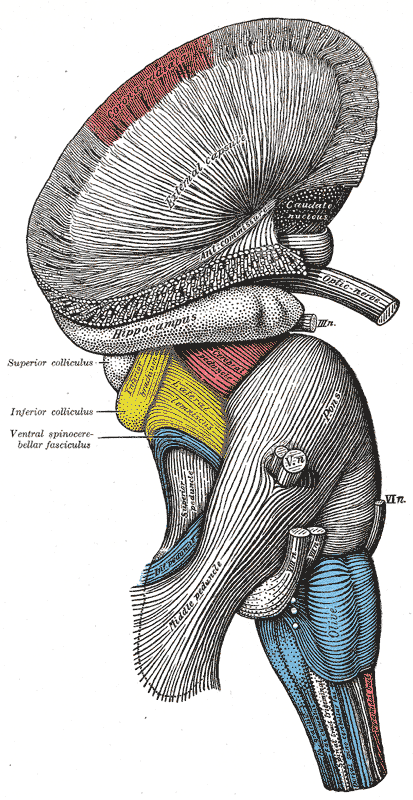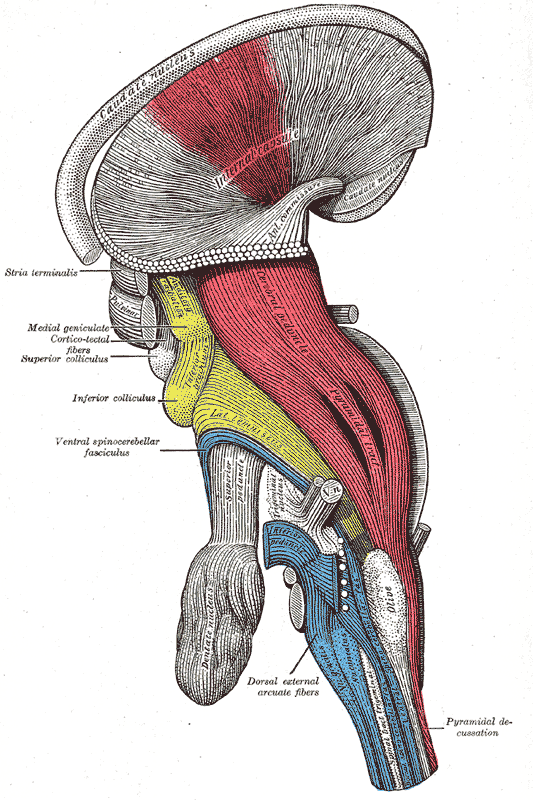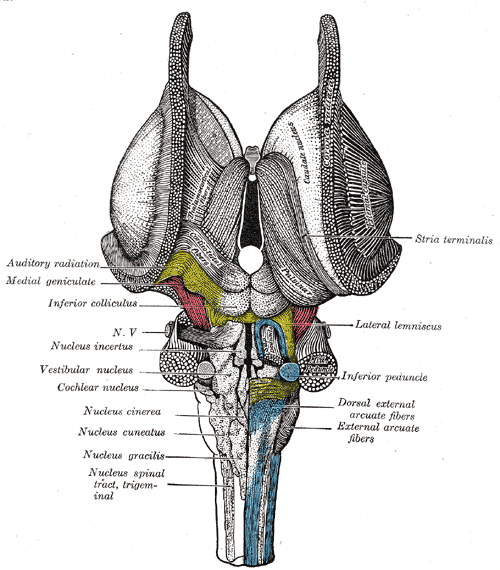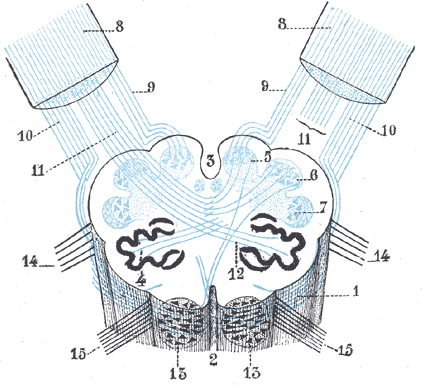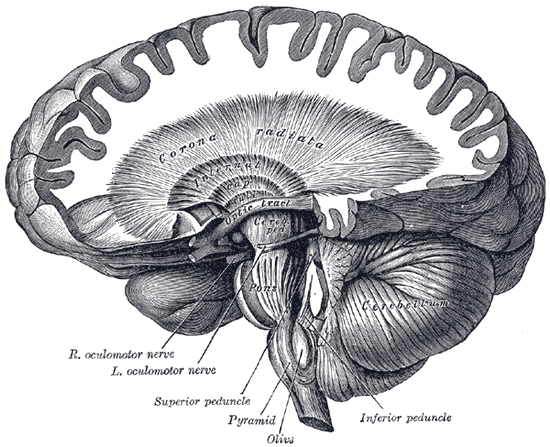Inferior cerebellar peduncle
Overview
The upper part of the posterior district of the medulla oblongata is occupied by the inferior peduncle, a thick rope-like strand situated between the lower part of the fourth ventricle and the roots of the glossopharyngeal and vagus nerves.
The inferior peduncles connect the medulla spinalis and medulla oblongata with the cerebellum, and are sometimes named the restiform bodies.
Function
The inferior cerebellar peduncle carries many types of input and output fibers that are mainly concerned with integrating proprioceptive sensory input with motor vestibular functions such as balance and posture maintenance.
Proprioceptive information from the body is carried to the cerebellum via the posterior spinocerebellar tract.
This tract passes through the inferior cerebellar peduncle and synapses within the paleocerebellum.
Vestibular information projects onto the archicerebellum.
This peduncle also carries information directly from the Purkinje cells to the vestibular nuclei in the dorsal brainstem located at the junction between the pons and medulla.
See also
Additional images
-
Upper part of medulla spinalis and hind- and mid-brains; posterior aspect, exposed in situ.
-
Superficial dissection of brain-stem. Lateral view.
-
Dissection of brain-stem. Lateral view.
-
Deep dissection of brain-stem. Lateral view.
-
Dissection of brain-stem. Dorsal view.
-
Diagram showing the course of the arcuate fibers.
-
Dissection showing the course of the cerebrospinal fibers.
